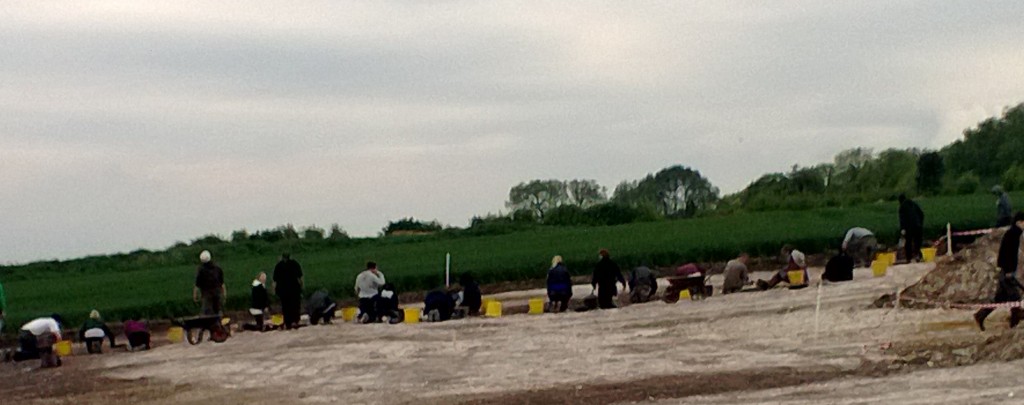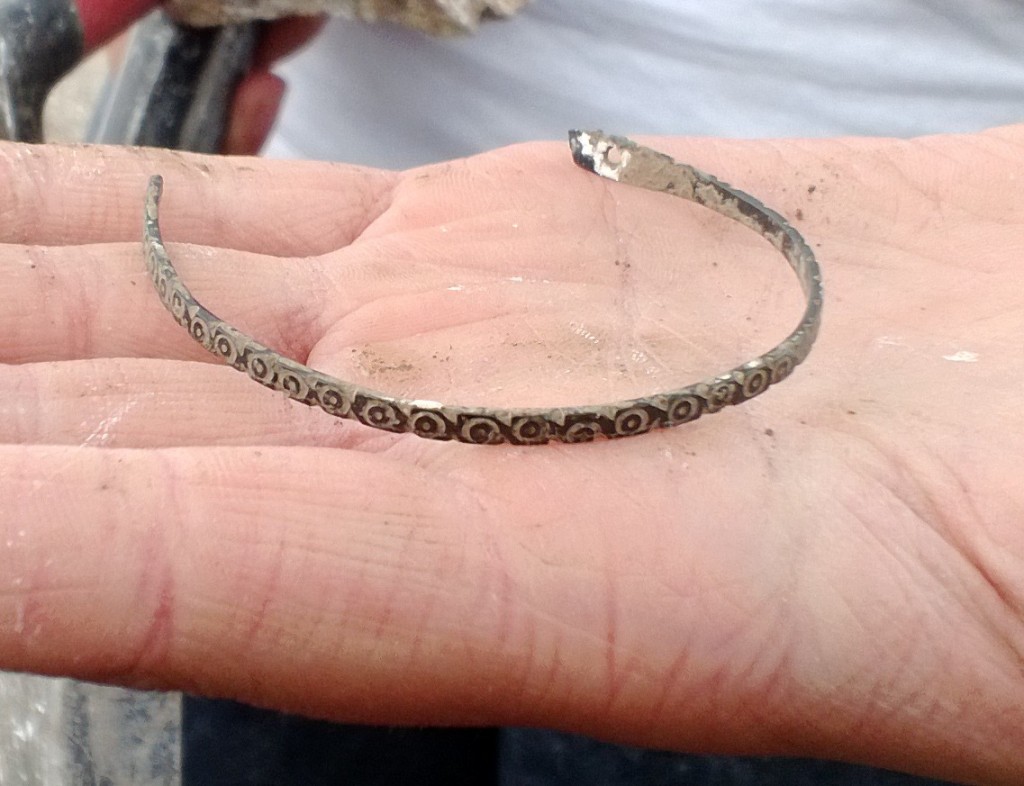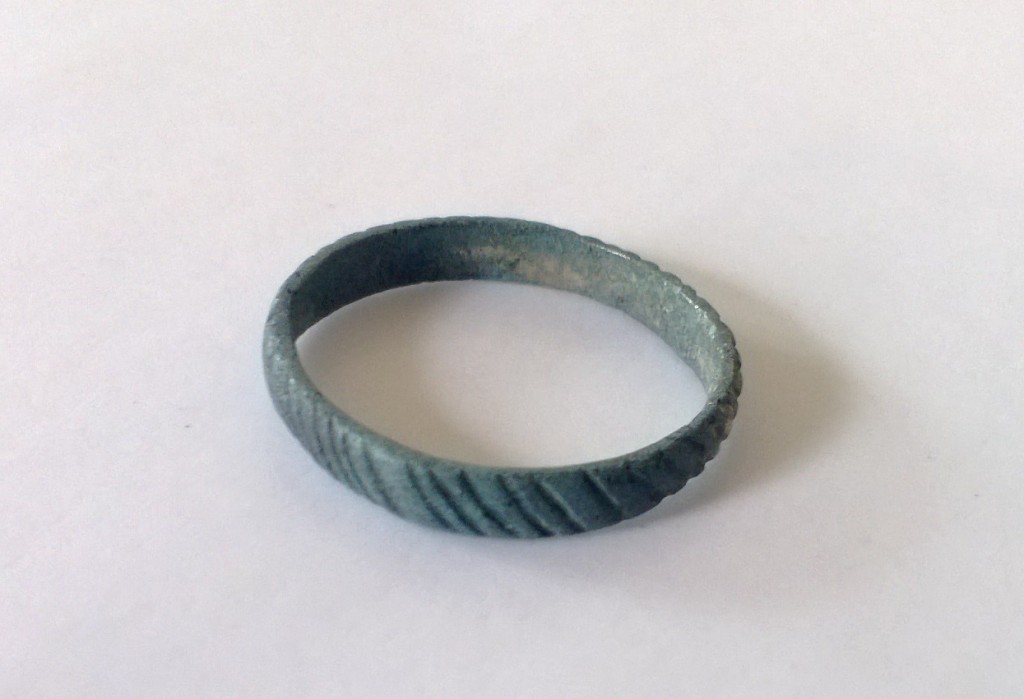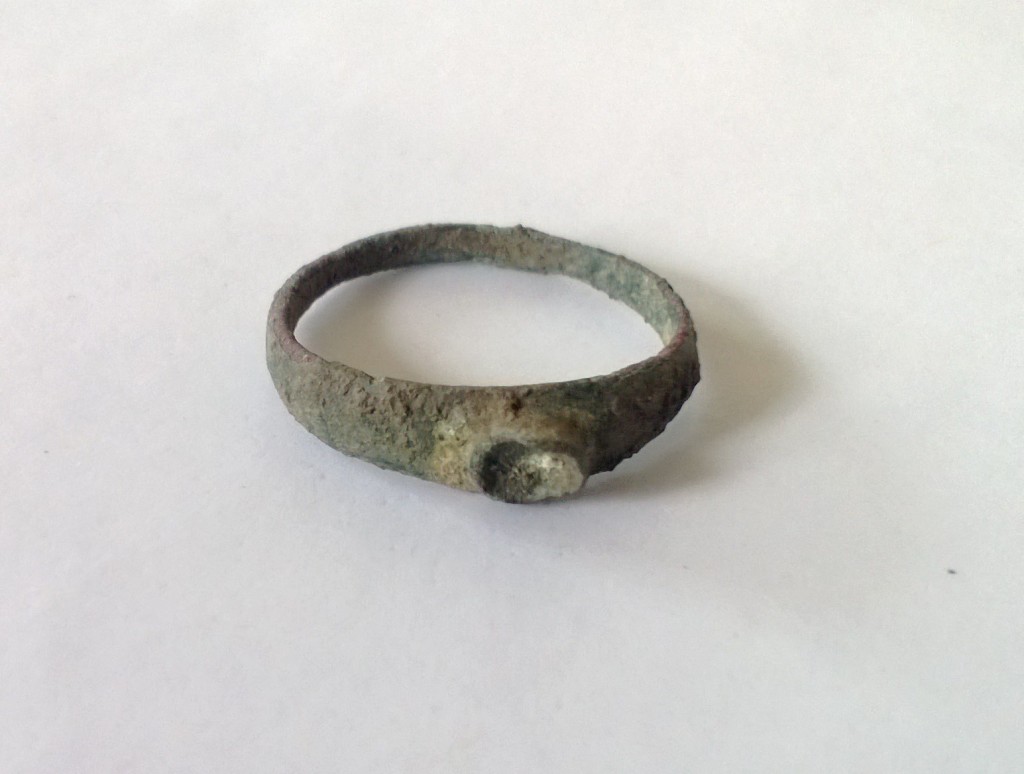Wednesday 29th May 2013
The first day of the “Durotriges Big Dig 2013” has arrived, which means straightening the site perimeters and cleaning back the next areas to be excavated. After five years of excavating, the site so far has revealed multi-phase occupation and/or activities from the discovery of the two Bell Beaker burials to the sequence of Late Roman buildings. This year hopes to excavate another area of possible late Roman house platforms in order to see the extent of occupation at the site. Cleaning back the site enables the probable features to become distinguished from the natural site chalk and for topsoil finds to be recovered. Topsoil finds are those that have been moved from their archaeological context but can still provide valuable information for the site.

Site overview photo showing new features emerging and the cleaning process in action. Courtesy of Bournemouth University.
The topsoil finds from today are typically Late Roman (approximately AD 300-350), and examples of finds include nails and jewelry. Two rings were recovered from the initial digging of the topsoil and further cleaning back recovered another two rings. Three of the rings had linear decoration around the band but the fourth ring showed evidence of gold gilding over the copper alloy base. What was left of the gold gilding showed that the ring was covered all over with it and not just around the stone inset. The photos below show an example of one of the linear decorated rings and the gold gilded ring.
The most impressive jewelry on site today was recovered by Sophie Avison, as pictured below. The clasped bracelet is thought to be from the Late Roman period but the ring and dot decoration is typical of an “Iron Age motif” (Kel Barrass).

Photo showing the recovered Clasped Bracelet, recovered by Sophie Avison. Courtesy of Bournemouth University.
Overall, this excavation season has promising moments ahead so watch this space!

